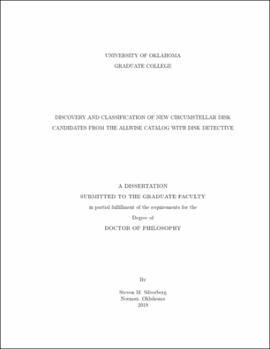| dc.description.abstract | In its five years since launch, DiskDetective.org has led to many new discoveries in the field of circumstellar disks. In my dissertation, I present two major emphases of the project: statistical characterization of infrared excess sources from AllWISE, and identification of unexpected populations of circumstellar disk. We show that at most 7.9\% of all WISE-detected infrared excesses are primordial or debris disks, and find that some published excess searches have false positive rates greater than 70\%. We present WISEA J080822.18-644357.3, an M5 member of the 45-Myr Carina association, that hosts a disk with an unusually strong excess for its age. We use J0808 as the prototypical example of "Peter Pan" disks, long-lived primordial disks around mid-M or later stars. We identify two new Peter Pan disk candidate systems, each an apparent visual double with WISE excess after both stellar components are accounted for. In follow-up observations of J0808, we find accretion rates of $10^{-12}-10^{-10} M_{\odot}$/yr, variable on 24-hour timescales, based on near-IR spectroscopy. We also note flare activity and star-disk interactions in nine nights of ground-based high-cadence optical photometry, and one month of high-cadence optical photometry from TESS. Using these characteristics, we explore possible origin scenarios for Peter Pan disks, including longer lives for primordial disks around mid-M stars than previously thought, and discuss methods of testing their validity. If Peter Pan disks are shown to be long-lived primordial disks, and a typical phenomenon around mid-M stars, the timescale for planet formation around these stars would also be greatly increased, affecting our expectations for planet yields and UV input onto the newly formed planets. Such disks would also potentially explain the near-circular resonant orbits of the TRAPPIST-1 system. | en_US |

